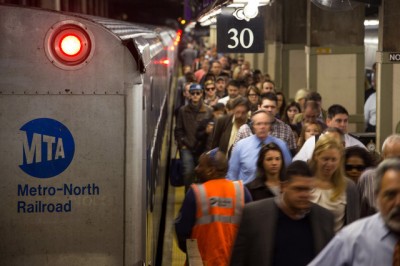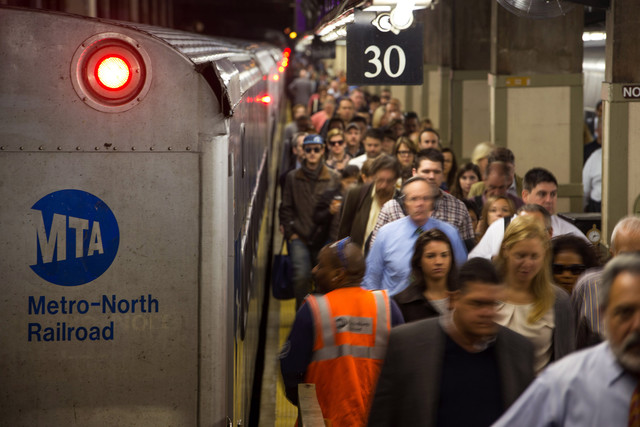
A major Northeast railway power failure and the vandalism of a portion of the power grid in Arkansas illustrate once again the vulnerabilities of key pieces of America’s infrastructure.
The second busiest railroad in the United States suffered a major power failure which disrupted the transportation needs of tens of thousands of individuals in late September. The railway runs between New Haven, Connecticut, and New York City’s Grand Central Terminal and garners electricity via two high-voltage “feeder cables.” One of the cables was removed from service a few weeks ago for a scheduled upgrade, and it is not currently known why the second feeder cable failed to do its job. It took more than a week to restore full service.
Connecticut Senator Richard Blumenthal, a Democrat, said the region – if it is be part of a growing economy — cannot have power failures of that magnitude. He called for an investigation.
“To grow jobs and strengthen our economy, safe and reliable rail service must be a top priority, and it is simply intolerable for a single cable failure to imperil that progress,” he said.
According to Metropolitan Transit Authority (MTA) officials, one 138,000-volt cable should have been able to carry the electricity needed to maintain railway function.
The railroad power outage caused a multitude of traffic issues on roadways, and local officials urged commuters to remain home until the line at least became partially functional, if at all possible. The outage underscores one of the major and potentially deadly obstacles urban dwellers will face during a disaster scenario – a loss of transportation.
The Arkansas power grid vandalism incident prompted the FBI to issue a $20,000 reward for information about the culprits. Although initial news reports deemed the electric grid vandalism a random act, investigators no longer appear to agree with such an assessment. Since the line is integral to relaying power to the area during peak usage times, the attack does not appear coincidental. A high-tension power transmission line was downed near the town of Cabot, Ark., during the vandalism to the grid.
Harness the power of the sun when the power goes out…
And official statement said “the person(s) responsible attached a cable to the framework of the 100-foot tower and placed the cable across the railroad track in an apparent attempt to utilize a moving train to bring down the tower.”
According to comments made by FBI investigators, the likely power grid vandalism suspect boasts an “above-average knowledge or skill in electrical matters” and is at least familiar with the area. Law enforcement investigators also believe that the power grid attack was most likely designed to prompt power outages in the region.
In 2010, Entergy informed the Arkansas Public Service Commission that a “single contingency” loss of transmission on the line would cause an overload on other lines relaying power to the area and potentially cause a widespread loss of power. The power grid attack occurred during the longest hot weather spell that the region had experienced during the past year. If the electrical grid vandalism had been as successful as the attackers had hoped, hundreds of thousands of Arkansas residents would have not been able to cool themselves and lost all their food which required refrigeration.
Former CIA Director James Woolsey has said America’s power grid is extremely vulnerable, calling it “the security equivalent of a house left with the door unlocked, the windows open, and millions of dollars of jewelry and home entertainment equipment strewn about for the taking.”
The National Academy of Science supported Woolsey’s statements about the power grid, stating in a report that terrorists could “cripple the national economy” by destroying or damaging “hard-to-replace” components of the electrical grid. Many of the necessary components are no longer made in the United States.
As previously reported by Off The Grid News, the congressional SHIELD Act is designed to address the vulnerabilities of the power grid but has not passed either body.
Additionally, the GridEX II nationwide power grid down drill is scheduled to take place in November. The federal government appears finally to be taking the advice of a host of their own experts and addressing the needs of the overly taxed and extremely vulnerable electrical grid. The drill will be held on November 13-14 and also include governmental agencies from Mexico and Canada. The preparedness drill is also enlisting the skills of more than 150 private power-related companies. Department of Homeland Security (DHS) staffers and other anti-terrorism agents will reportedly work alongside utility workers to test for security weaknesses in the power grid.










